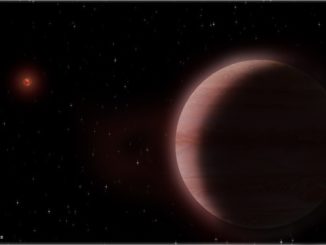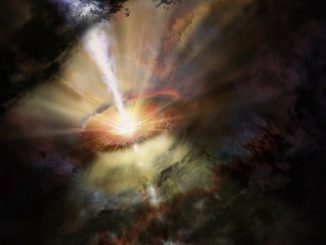
VLBA





Galactic merger exposes supermassive black hole
Astronomers using the super-sharp radio vision of the National Science Foundation’s Very Long Baseline Array (VLBA) have found the shredded remains of a galaxy that passed through a larger galaxy, leaving only the smaller galaxy’s nearly-naked supermassive black hole to emerge and speed away at more than 2,000 miles per second.

Supermassive black hole fed by cold intergalactic downpour
An international team of astronomers using the Atacama Large Millimetre/submillimetre Array (ALMA) has witnessed a cosmic weather event that has never been seen before — a cluster of towering intergalactic gas clouds raining in on the supermassive black hole at the centre of a huge galaxy one billion light-years from Earth.

Space-Earth system produces highest-resolution astronomical image
Using an orbiting radio-astronomy satellite combined with 15 ground-based radio telescopes, astronomers have made the most-detailed astronomical image yet, revealing new insights about a gorging black hole in a galaxy 900 million light-years away. The image has the resolving power of a telescope about 62,500 miles wide, or almost eight times the diameter of the Earth.

